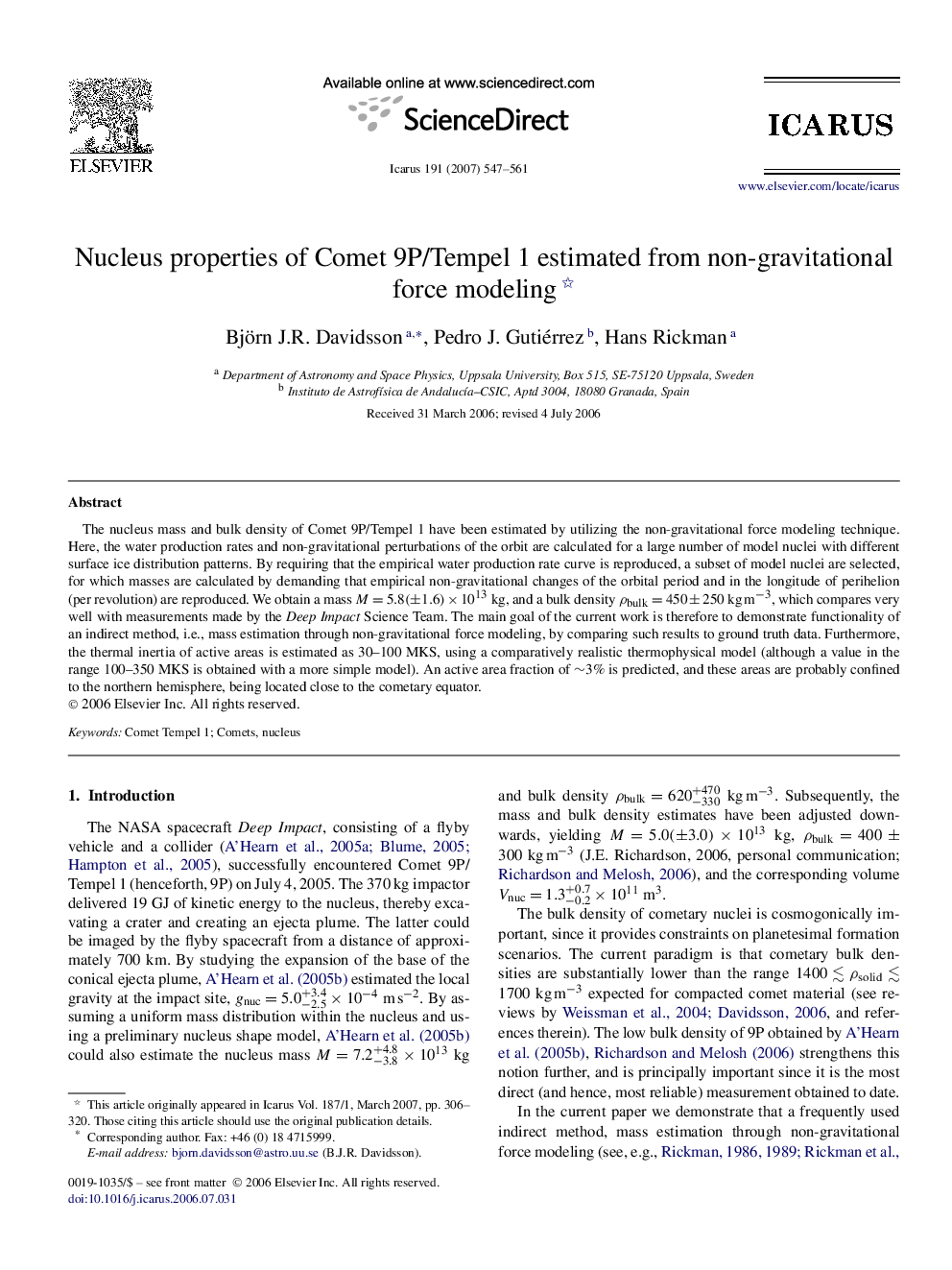| Article ID | Journal | Published Year | Pages | File Type |
|---|---|---|---|---|
| 1775276 | Icarus | 2007 | 15 Pages |
The nucleus mass and bulk density of Comet 9P/Tempel 1 have been estimated by utilizing the non-gravitational force modeling technique. Here, the water production rates and non-gravitational perturbations of the orbit are calculated for a large number of model nuclei with different surface ice distribution patterns. By requiring that the empirical water production rate curve is reproduced, a subset of model nuclei are selected, for which masses are calculated by demanding that empirical non-gravitational changes of the orbital period and in the longitude of perihelion (per revolution) are reproduced. We obtain a mass M=5.8(±1.6)×1013 kgM=5.8(±1.6)×1013 kg, and a bulk density ρbulk=450±250 kgm−3, which compares very well with measurements made by the Deep Impact Science Team. The main goal of the current work is therefore to demonstrate functionality of an indirect method, i.e., mass estimation through non-gravitational force modeling, by comparing such results to ground truth data. Furthermore, the thermal inertia of active areas is estimated as 30–100 MKS, using a comparatively realistic thermophysical model (although a value in the range 100–350 MKS is obtained with a more simple model). An active area fraction of ∼3%∼3% is predicted, and these areas are probably confined to the northern hemisphere, being located close to the cometary equator.
